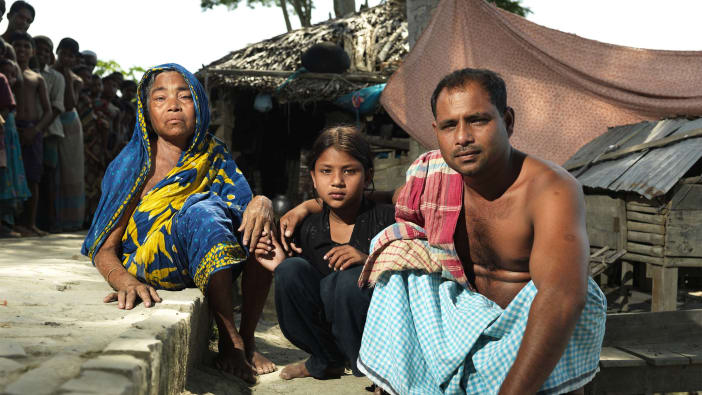by Elizabeth Bates, Nigel Bruce, Alison Doig and Stephen Gitonga.
Around 80% of people in rural sub-Saharan Africa depend on fuels such as wood, dung and crop residues for their domestic energy. Smoke from burning these fuels inside homes can lead to an increase in serious health problems such as pneumonia and lung disease. This particularly affects women and young children who spend large amounts of time in the kitchen.
In Kenya, the Intermediate Technology Development Group (ITDG) carried out the Smoke and Health project, which worked together with 50 rural households in two communities to reduce air pollution in their homes.
Field staff informed women’s groups of the project and what it hoped to achieve. There was no shortage of people wanting to take part in the project.
Baseline assessment
A baseline assessment was first carried out so that the impact of the project could be measured. A questionnaire was used by field workers with each household. It recorded information such as the size of the household, means of cooking and lighting, plan and structure of the house, time and activity spent in the kitchen, and health of the household.
The smoke pollution levels in kitchens were measured. In some kitchens, the level of particles in the air that cause damage to the lungs was 100 times greater than acceptable levels.
Focus group meetings
Participants identified the following problems associated with indoor pollution:
- painful, watering eyes
- chest infections
- ear infections
- breathlessness, chest pains and difficulty in breathing
- frequent headaches
- stained clothes
The participants listed some benefits of smoke, such as drying firewood, repelling insects and preserving cereals.
The focus groups identified three key ways that the situation could be improved:
- improve air flow by increasing the size of windows or opening the eaves spaces (the gap between the roof and the walls)
- add smoke hoods over the cooking area
install improved stoves
In one community, husbands were involved in these discussions. This was important because they are usually responsible for house building.
Interventions
Group discussions and individual house visits were used to identify positions for windows, eaves spaces and smoke hoods. Models of hoods were made with paper and checked by local builders who were either experienced in local manufacturing techniques or had been trained as part of the project.
Once these improvements were in place, households were trained to use and maintain them well. This was done mainly through women’s groups. For example, the importance of opening windows in order for them to be effective was stressed.
Outcomes
Increasing the size of the eaves spaces successfully reduced smoke in one community. However, due to the different house design in the other community, eaves spaces could not be used.
The use of windows was less effective in reducing smoke levels in the home, but opening the window improves the way fires burn. Windows have had other benefits which have improved the quality of life.
Households that used improved stoves experienced little improvement in pollution levels, but they have benefited from reduced fuel use, shorter cooking time, increased safety and ease of use.
Community members said that, as a result of the improvements, the reduction of smoke was much higher than they had expected. It was found that the introduction of hoods reduced the number of dangerous particles in the air by 75%.
Some problems were found. These include:
TECHNICAL PROBLEMS For example, windows made kitchens cold and draughty and wick lamps were blown out on very windy days. Cats and dust came in through the window. Mesh could be used to prevent cats.
SOCIAL FACTORS Some people were worried that thugs and thieves could see into their houses. Shutters were helpful. Chimney hoods made it more difficult to lean over the pot to cook.
ECONOMIC ISSUES The cost of smoke hoods is higher than most households can afford. They can be made more afford-able by using scrap metal instead of new metal, and making some parts of the hood from clay and other materials.
The project has had a positive impact on the lives of local builders who have been trained by the project. They benefit from orders for smoke hoods. Neighbours of the women involved in the project feel that a bigger group needs to be targeted to meet the demands of the community.
ITDG is now working on similar projects with communities in urban Kenya, in a high cold region in Nepal and with displaced people in Sudan.
Elizabeth Bates and Alison Doig both work for ITDG UK, Stephen Gitonga works for ITDG Kenya, and Nigel Bruce works in the Department of Public Health at the University of Liverpool, UK.
For further details about the project: ITDG, Bourton Hall, Bourton-on-Dunsmore, Rugby CV23 9QZ UK









